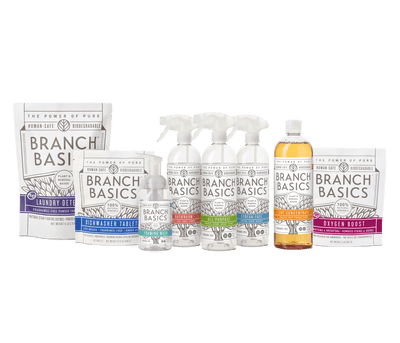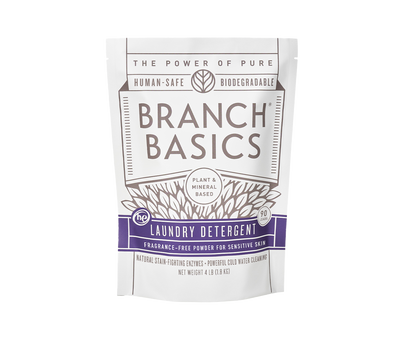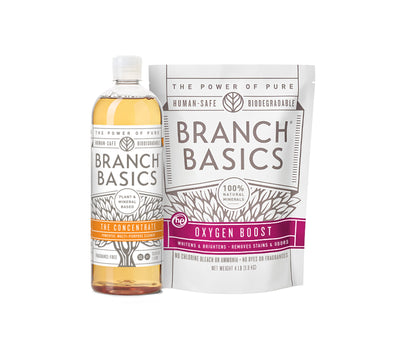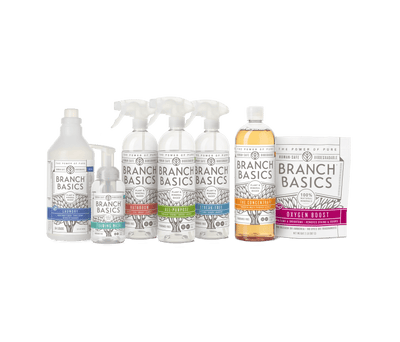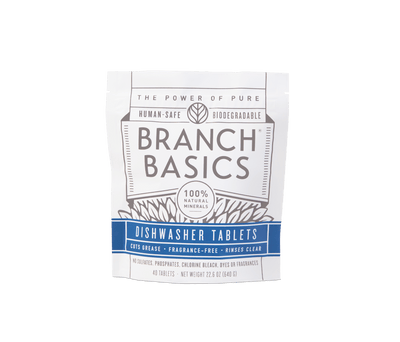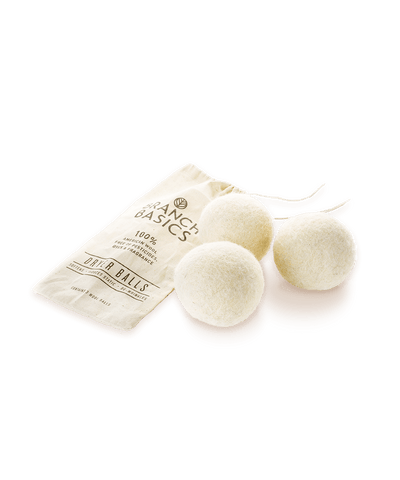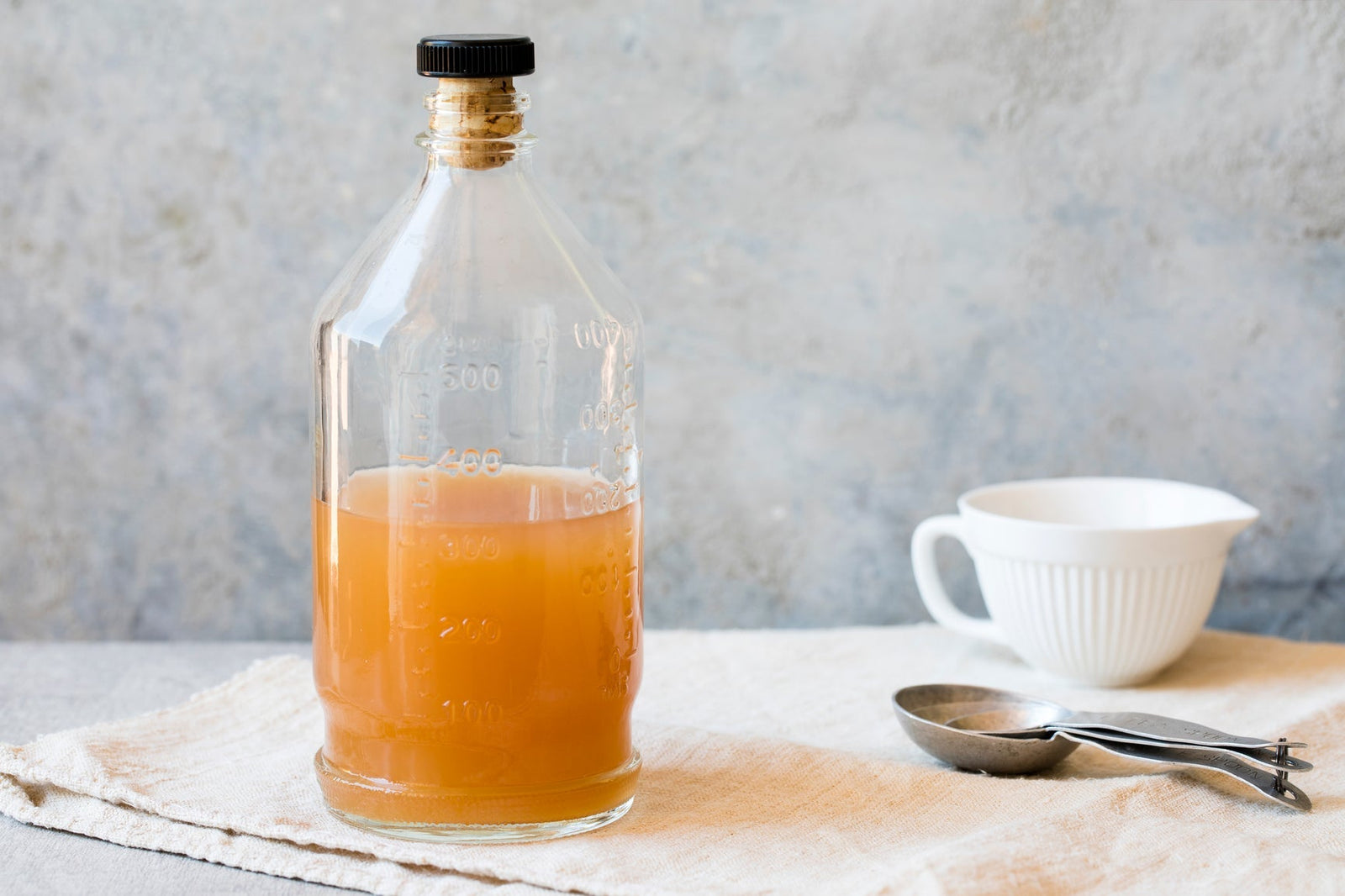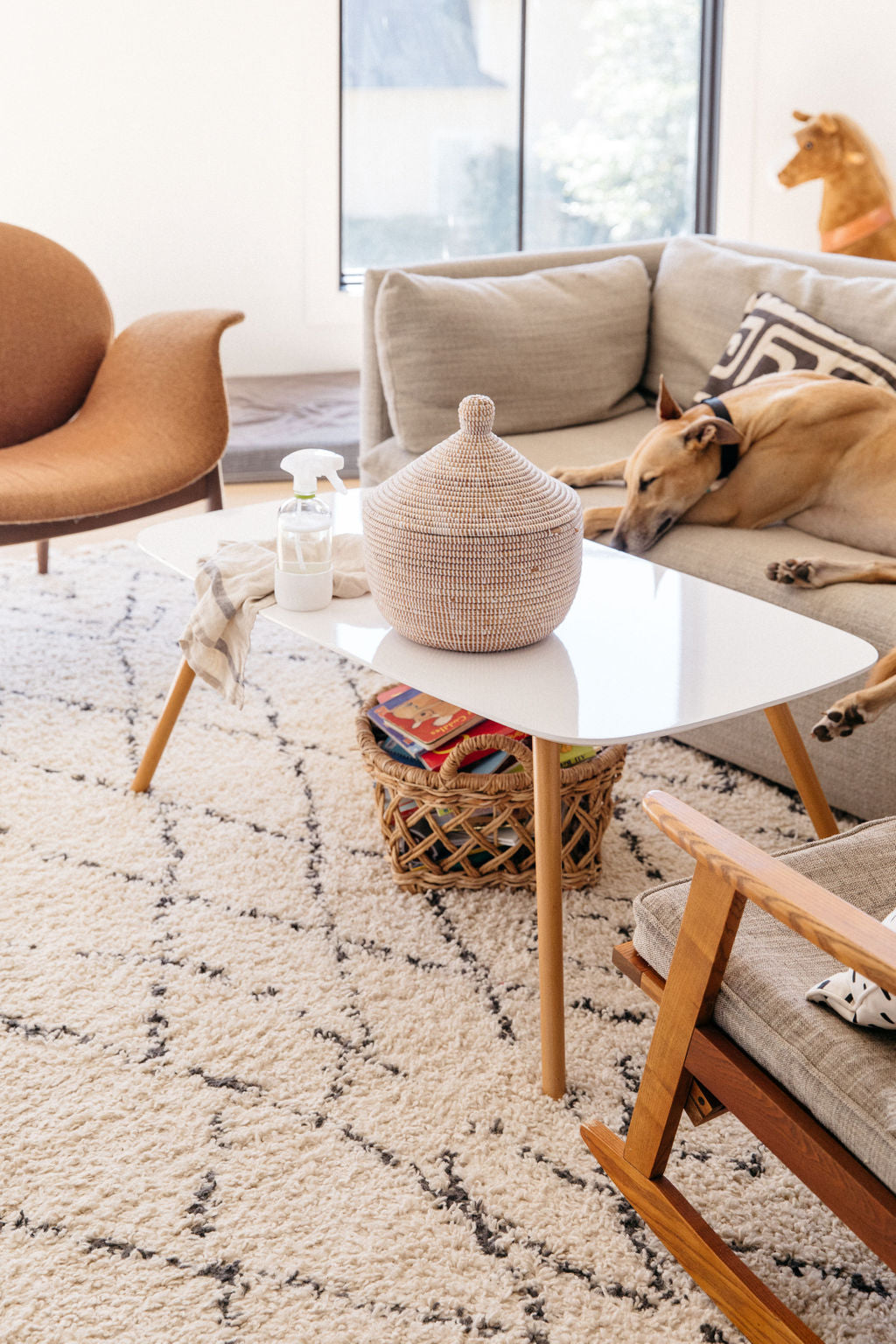Common Cleaning Products to Avoid While Pregnant | Branch Basics
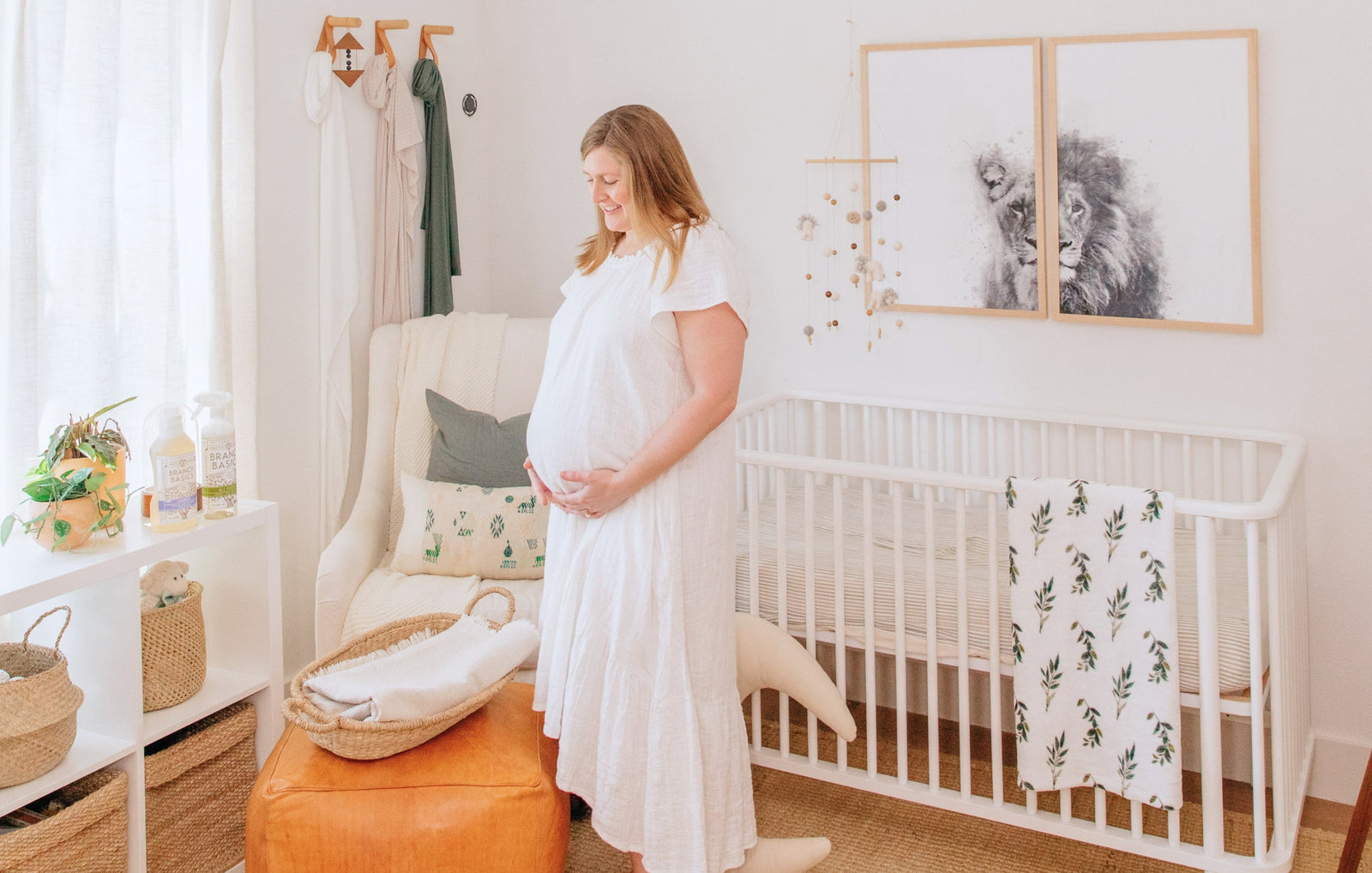
When you’re pregnant, you want to create the safest and healthiest environment for your growing baby.
Although high-quality nutrition, managing stress, good prenatal care, and exercise are paramount, knowing which cleaning products to avoid is also absolutely essential.
That’s because many cleaning products we use daily have never been tested for safety in pregnant women or developing babies!
And believe it or not, many ingredients in cleaning products, such as bleach, solvents, and phthalates in fragrances, are known to cause harm.
Yet, there are no laws about pregnancy-specific warnings on cleaning product labels.
We think it is not OK, so in this article, you’ll learn exactly which cleaning products to avoid while pregnant, how to vet product safety, and what to use instead for a clean, safe, and healthy home.
1. Ammonia-Based Cleaning Products
Many pregnant women have a natural aversion to the smell of ammonia in window and glass cleaners. (That’s where your enhanced sense of smell comes in handy!)
However, ammonia is in a lot more cleaning products than you might imagine, including:
- Floor cleaners
- Tile cleaners
- Multi-purpose cleaners
- Pet stain removers
- Bathroom cleaners
- Disinfect sprays, wipes, and cleaners (often in the form of Quats, which we’ll discuss coming up)
How do you avoid ammonia in cleaning products?
In some cases, your nose will tell you, but not always.
In general, it is best to avoid the synthetic chemical cleaners listed above and opt for human-safe alternatives.
You can also check labels (although cleaning product companies are not required to list all their ingredients) or see 5 Ammonia-Free Cleaning Products for more tips.
2. Cleaners with Phthalates
Phthalates ((pronounced THAIL-ates) are known endocrine (hormone) disruptors that cross the placental barrier and interfere with your pregnancy and baby’s development in many ways, including (but not limited to):
- Increasing risk of miscarriage and preterm birth
- Increased risk of pre-eclampsia
- Hormonal imbalance
- Thyroid issues
- Sex-specific changes to childhood growth
- High blood pressure
- Deficits in neuro-endocrine development
- Impaired male reproductive health
- Developmental toxicity
- Impaired placental function
- Low birth weight
- Reproductive development issues in boys
The mind-blowing thing is they are ubiquitous in fragranced products as well as plastics and many other everyday items.
The best way to avoid phthalates is to go naturally fragrance-free for cleaners, laundry products, and personal care products and avoid plastics, plug-ins, and air fresheners.
Instead, look for human-safe products that state “phthalate-free” and “fragrance-free” on labels.
We also recommend taking steps to remove fragrance from hand-me-down baby or maternity clothing, sheets, etc. Learn how here.
Get the full scoop on phthalates in: Phthalates: Where Are They Hiding & How To Go Phthalate-Free.
3. Aerosol Products
Although the days of aerosol hairspray are mostly over, aerosols are still prevalent in cleaning products such as disinfectants, dusting sprays, toilet bowl cleaners, and more.
Multiple studies demonstrate a correlation between spray and aerosol chemical cleaners and an increased risk of adult-onset asthma.
Other studies suggest exposure to these cleaners can increase the baby's risk of lung problems, including wheezing and infections.
Some of the worst ingredients in aerosols are:
- Acrylic polymers
- Alcohol
- Ammonia
- Chlorine
- Glycol
- Glycol ethers
- Sodium hydroxide
- Terpenes (and these may come from natural or synthetic sources)
The good news is, avoiding these is easy. Just don’t buy aerosol cleaners!
Related reading: Natural Dusting Spray Alternatives (+ Ingredients To Avoid)
4. Glycol Ethers
Glycol ethers are used as surfactants/detergents and solvents in cleaners and other products like antifreeze, soaps, cosmetics, and hand sanitizer.
Their use is widespread in cleaning and laundry products, which rely on various types of surfactants (natural and non-natural) and solvents to lift and trap dirt and grime.
Although glycol ethers go by many names, ethylene glycol is possibly the most problematic and toxic for pregnant women.
It is rated a 6 on the Environmental Working Group’s Skin Deep (a non-profit watchdog organization that rates ingredients on a scale of 1-10, with “1” being the least toxic and “10” being the most toxic).
Studies have shown glycol ether exposure may increase the risk of congenital malformations.
Occupational exposure to chemical solvents, like glycol esters, has also been associated with a 3 times greater risk of miscarriage.
Avoiding glycol ethers in cleaning products can be tricky as they aren’t typically labeled “glycol ether.”
Here’s how to spot them on labels:
- PEGs of all types
- Monoethylene glycol
- 1,2-ethanediol
- MEA
- Glycol
- Propylene glycol
The good news is, there are many plant- and mineral-based, biodegradable cleaning products that use safer surfactants, such as natural castile soap, coco glucoside, or decyl glucoside that do not contain glycol ethers, or any other toxic ingredients found in detergents.
Related reading:
- Are Surfactants Toxic? The Dangers And Alternatives
- Is Propylene Glycol Toxic?
- Surfactant Vs. Detergent: What’s The Difference?
5. Bleach
If pregnant women and those wishing to become pregnant or who are battling fertility issues knew the truth about bleach and disinfectants, it could change the world.
Here’s why.
- According to the CDC, disinfectants, including bleach, increase the rate of miscarriage and preterm birth. However, they do not know at what concentration they become problematic.
- Studies show exposure to synthetic disinfectants damages the maternal microbiome, including the placenta, which can affect the unborn child in ways known and unknown
- Research has also shown passive exposure to bleach, such as by breathing in cleaning products at home, can cause an increased risk of respiratory illness and other illnesses in children.
- Bleach is one of the top poisoning toxins of children worldwide.
- Bleach is an EPA-registered pesticide.
- Bleach can form a deadly gas when mixed with various natural or unnatural substances such as ammonia, vinegar, drain cleaners, alcohol, hydrogen peroxide, dirty water high in organic matter, and other household cleaning products.
The bottom line is that bleach should be avoided and removed from the home, period. But especially during pregnancy and while babies and children are in the home.
Learn more in: Is Sodium Hypochlorite (Bleach) Toxic?
6. Quats and Antibacterial Cleaners
Also known as quaternary ammonium compounds or Quacs, Quats a type of ammonia-based disinfectant chemical used liberally in antibacterial, antifungal, and disinfectant cleaning products.
As noted by the CDC they have many of the same risk factors as bleach regarding fertility, pregnancy, and fetal development.
They’ve also been linked to: (Sources: 1, 2, 3, 4)
- Antimicrobial resistance
- Decreased mitochondrial function
- Developmental toxicity
- Reproductive toxicity
- Respiratory issues (Quats are asthmagens)
Quat chemicals are not easy to spot in labels unless you know what you’re looking for.
However, if you’re buying synthetic chemical disinfectant wipes or sprays that claim to kill 99.9% of germs (ahem), you can bet it contains Quats.
The following are ingredients to watch out for:
- 1-Propanaminium
- 3-amino-N-(carboxymethyl)-N,N-dimethyl-
- Alkyl dimethyl benzyl ammonium chlorides (C12-16)
- Alkyl dimethyl benzyl ammonium chloride (C14 60%, C16 30%, C12 5%, C18 5%)
- Alkyl dimethyl ethylbenzyl ammonium chloride (C12-14)
- Alkyl dimethyl ethylbenzyl ammonium chlorides (C12-18)
- Benzalkonium chloride
- Benzethonium chloride
- Cetromonium bromide (dryer sheets)
- Cocamidopropyl PG-dimonium phosphate
- Denatonium benzoate
- Dialkyl dimethyl ammonium chloride
- Didecyldimethylammonium chloride
- Dioctyldimethylammonium chloride
- Guar gum hydroxypropyltrimonium
- Inner salts
- N-coco acyl derivs
- Panthenyl hydroxypropyl steardimonium chloride
- Polyquat
- Propyl ether
- Quaternium 15
Get more details in: What Are Quats? Risks, Facts, & More
We also recommend avoiding disinfectants high in alcohol, including hand sanitizers, as these can cause microbiome disruption and are hard on the liver and organs if absorbed.
Learn how to safely disinfect without harmful chemicals in: 8 Best Natural Disinfectants For Everyday Use.
7. Dry Cleaning Chemicals
Preconception, pregnancy, and any time is a perfect time to stop or severely limit exposure to dry cleaning chemicals.
One of the most widely used and concerning is Percs, a classified hazardous chemical also known as tetrachloroethylene, perchloroethylene, or “dry cleaning fluid.”
According to the Centers for Disease Control, percs may be harmful to pregnant women and unborn children.
They carry other risks, including:
- Being “reasonably anticipated to be a human carcinogen” and has been linked to an increased risk of skin, colon, lung, esophageal, and urogenital tract cancers as well as lymphosarcoma and Leukemia.
- Respiratory and eye irritation.
- Liver, kidney, and lung damage.
- Linked to neurological problems and can negatively affect mood, memory, reaction time, and vision.
For those who don’t work in dry cleaning facilities, perc exposure comes from absorption via skin contact and inhalation with dry-cleaned clothing.
This is also why it’s super important to thoroughly wash (2-3 times) brand-new clothes or even pre-owned clothing.
Find more information on percs and dry cleaning alternatives in: How To Wash Dry Clean Only Clothes At Home
8: Parabens
Paraben preservatives are less prevalent than 10 years ago.
However, they are still used frequently in cleaning and personal care products.
This is problematic for pregnant women and babies because parabens are proven endocrine (hormone) disruptors that cross the placental barrier.
Research has shown paraben exposure in utero may contribute to weight issues in childhood, the reproductive health and genital development of boys, and impaired testosterone function in boys.
Parabens are generally (but not always) listed on labels.
Two of the most highly used are:
- Propylparaben: rated a 9 on EWG Skin Deep
- Methylparaben: rated a 3 - 4 on EWG Skin Deep
You can also look for cleaners that are “paraben-free”, but do check the labels or run them through the EWG or Think Dirty apps to rule out other potentially problematic ingredients.
Learn more about parabens in: 3 Tools You Need to Become Your Own Product Advocate.
How To Vet Pregnancy Safe Cleaning Products
If becoming a cleaning product label reading expert isn’t high on your list of priorities during pregnancy (!), we recommend the following resources:
- EWG Skin Deep: Only use products with all ingredients rated “1-2”
- EWG Guide to Healthy Cleaning: Only use products rated A or B+
- Think Dirty: Only use products rated “0”
We must emphasize that greenwashing is rampant in the cleaning industry.
Therefore, buying products labeled “all-natural,” "green,” “eco-friendly,” “made with essential oils,” or “organic” doesn’t necessarily mean they do not contain many of the ingredients listed above.
Learn more about how to vet products in: 3 Tools You Need To Become Your Own Product Advocate.
How to Safely Dispose of Harmful Products in Your Home
Removing harmful cleaning products from your home is essential as chemicals leak out of bottles, degrading air quality (just think about the last time you walked through the cleaning and laundry aisle in the store, all those sealed bottles emit a strong smell).
However, we don’t want you to wash them down the drain or dispose of them incorrectly.
See How To Dispose Of Cleaning Products Safely (And Legally) for instructions and resources.
Create a Pregnancy and Kid-Safe Home with Branch Basics
If you’re looking for a simple way to replace harmful cleaners during pregnancy (and beyond) start with Branch Basics. Our Toss the Toxins online video course teaches you how to become your own product expert and create a healthy home.
Our company is co-founded by three seasoned mothers dedicated to helping parents navigate a low-tox lifestyle.
Branch Basics Starter Kits contain everything you need to replace every single cleaner and laundry product in your home with one plant-based concentrate plus mineral-based Oxygen Boost.
Simply add water plus the designated amount of Concentrate to the refillable Branch Basics Bottle (or use your own) to make All-Purpose, Streak-Free, Bathroom, Laundry, Foaming Wash, and custom dilutions.
Our products are human-safe, earth-friendly, Made-Safe Certified, Leaping Bunny Certified, plant- and mineral-based, and made for the most sensitive/chemically-sensitive individuals (including mamas-to-be and their babies).
To learn more, see: How To Get Started With Your Branch Basics Kit.
Ready to test us out? Check out Branch Basics Premium Starter Kits in refillable plastic or glass, or give us a trial run with Branch Trial Kit for just $5.00.
Want more tips for a low-tox pregnancy? Check out the following articles:
Categories
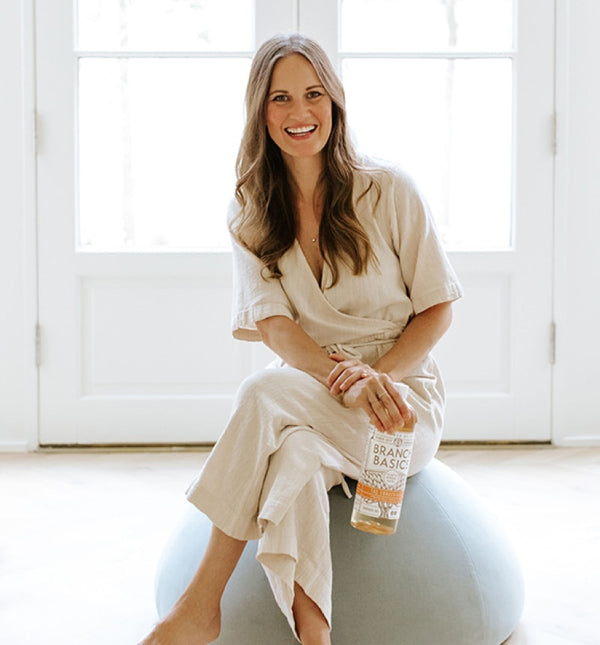
Kelly Love
Kelly is proof that switching to a pure, natural lifestyle is powerful even for those who consider themselves healthy. She’s experienced how much our everyday choices impact our quality of life and is passionate about helping others see and feel the connection. She lives in Jackson, Mississippi with her husband and two daughters.
